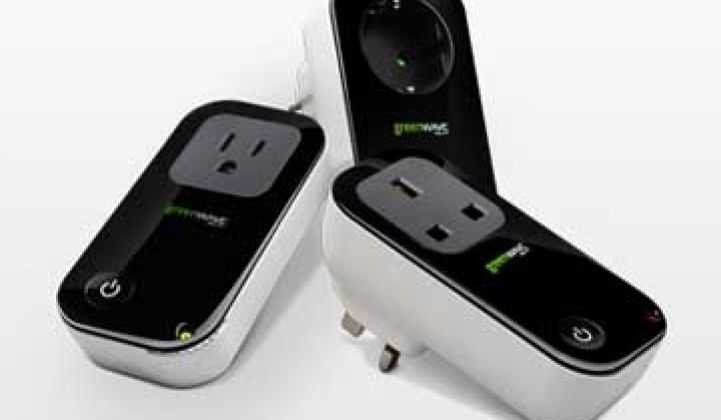Keep it simple, stupid -- and cheap. That seems to be the motto of Greenwave Reality, the latest player in the bustling home energy management space. Greenwave, with its consumer-focused plug-and-play products, is not heading to big box stores. Instead, it is looking to partner with utilities to bring its power nodes, radio gateway, and in-home display (and requisite iPhone app) to consumers.
As utilities deploy smart meters there is a lot of talk of home energy management, yet there are few real-time systems actually in use beyond pilots.
That's why Greenwave is starting in carbon-conscious Europe. "I think the U.S. is behind in the mentality," said Greg Memo, CEO of GreenWave Reality. "But there haven't been solutions to get people engaged."
The company, with offices in Irvine, Calif., Copenhagen and Singapore, is involved in several pilots in northern Europe. There are no firm pilot results yet, but they have seen about a 10 percent cut in usage by most customers so far. He said customers have already reacted to the affordability of the solution. "Just by a consumer knowing where [energy] is being spent, they can cut back," he says, "even without automation."
A basic starter kit includes a six-node power strip, a one-point plug (pictured), an energy display and an IP-based wireless gateway to link everything together at a cost of about $200. The platform can work with Z-Wave or ZigBee networks. At first glance, the setup is similar to other players in the market, including Alarm.com, which just entered the fray.
Once you have, let's say, your home theater system plugged into the power strip and the other node hooked to your dishwasher, you're ready to manage some of your devices.
The gateway allows you to monitor your usage (wow, that space heater does use a lot of energy!) and create smart controls. If you were to hook up your entire living room, you could turn it off with the click of a mouse or the push of a button on your smart phone. Greenwave's technology will even identify your appliance for you.
The company is also developing lockout buttons so that once something is turned off, the person in the room can't turn it back on. This feature would be advantageous in any household where children just can't seem to turn the TV off at night or flip the lights off when they leave a room.
The online portal also allows you to color-code each room, so the living room might be the blue category, the kitchen is red, etc. In the portal, each category is presented in an easily navigable carousal configuration so you can look at energy use by room, and then drill down for details on lights and appliances.
The portal also has many of the features offered by other energy management systems, including 'My Energy Coach,' which offers tips for reducing energy usage.
The portal also shows current, average, and regional usage (in kWh or dollars) for your residence, because as other companies like OPOWER have found, the prospect of keeping up with the status quo is great motivation.
The idea of buying cheaply priced smart nodes instead of new, ZigBee-enabled appliances could certainly make sense for many consumers.
But I always have to ask myself, could my father use this? Sure, he can plug something into the wall and then plug the TV into that. He might look at his energy use on the little display that he'll set up in the kitchen as he sneaks a Klondike bar. But then what?
Will he log on and create smart controls to set the dishwasher to run at 3 a.m. (in a faraway world of time-of-use pricing, where this would matter)? I'm not sure. Memo is confident that with Greenwave's background in consumer solutions (many of the executives, including Memo, came from Cisco), they have a product that even my father can and will use to reduce his energy consumption.
If it sounds like other smart plugs, well, in many ways, it is, although Greenwave thinks it will be competitive because of its price point and especially because of the company's in-depth knowledge of consumers.
Memo acknowledges that any measure of success the company can achieve will involve getting utilities onboard and giving their customers a reason to care in the first place. "Many utilities refer to customers as load points, so that tells you how far some companies still have to go," he says. "It's about [utilities] putting in a comprehensive program and making it a relationship." Greenwave Reality is banking that they will.



